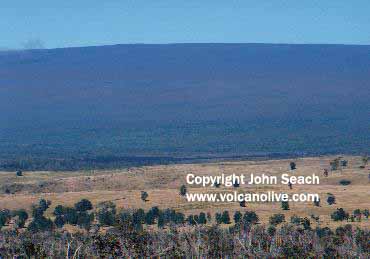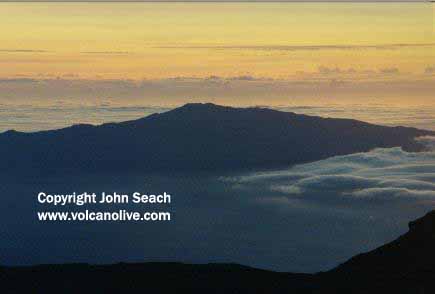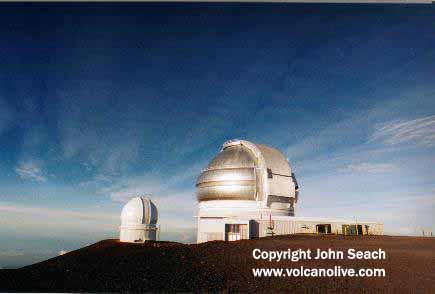1.
Kilauea is one of the world's most active volcanoes in hawaii. The volcano has been in constant eruption since 1983. A large collapse occurred at Kilauea volcano in November 2005. Lava flows destroyed three houses in Royal Gardens subdivision in February 2008.

Surface Lava flows, Kilauea Volcano - John Seach
Mauna Loa volcano is one of the tallest mountains in the world. When measured from its base on the sea floor, it rises more than 17,000 m (56,000 feet). Mauna Loa volcano is approaching its longest historical period of inactivity, 25 years. Mauna Loa volcano is spreading because its size is large compared to the thin basal layer.

3.
Hualalai is the westermost shield volcano on the island of Hawaii. Eruptions of Hualalai Volcano in 1800-01 occurred from 5 vents with two lava flows reaching the sea.
Hualalai began growing on the west flank of Mauna Kea about 800,000 years ago, and rose above sea level 300,000 years ago. The northwest rift zone of Hualala continues for a distance of 40 km, to a depth of 3000 m.

4.
Mauna Kea is the second highest volcano in the hawaii. It is a dormant volcano with a small posibility of eruptions in the future. Eighty percent of people who summit Mauna Kea suffer from altitude illness, due to rapid ascent from sea level.

5.
Kohala is the oldest volcano on the Big island of Hawaii.
The summit is broad and covered with trees. Kohala is the oldest of Hawaii's five volcanoes. Kohala is in a transition between postshield and erosional stage.
Kohala volcano had grown to its maximum height before its southern flank was buried beneath lava erupted from Mauna Kea.
Mega-tsunami deposits have been found on Kohala volcano, from flank collapse of Mauna Loa about 110,000 years ago. The mega-tsunami reached a height of 61 m above the present sea level, and a runup distance of up to 6 km inland.6. Loihi is the youngest of the Hawaiian volcanoes. It is located 35 km SE of the Big Island of Hawaii. Earthquakes are frequently measured at the volcano.


No comments:
Post a Comment